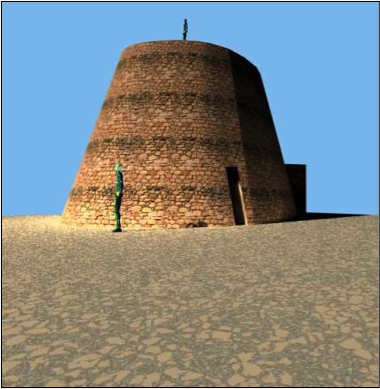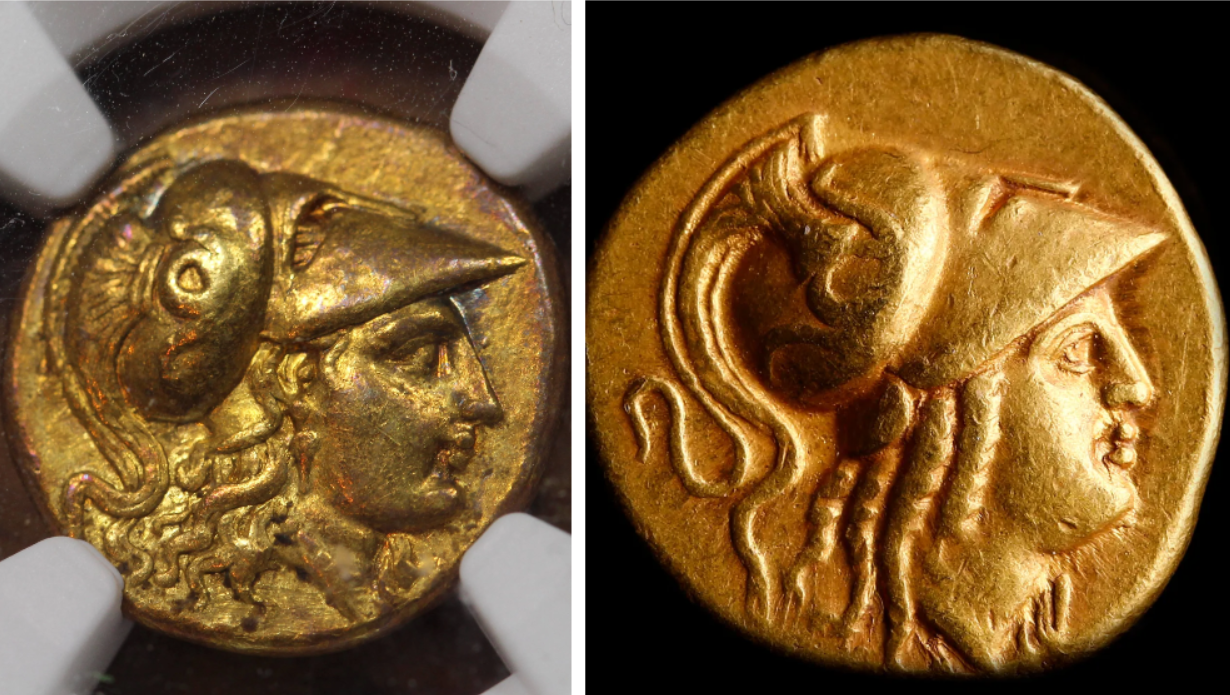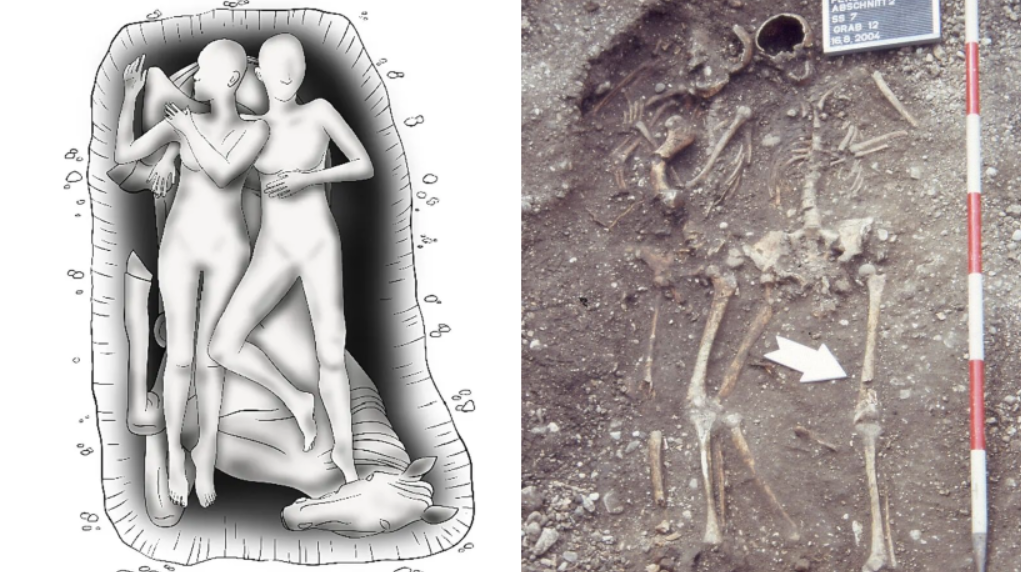An ancient tower at the archaeological site of Tel Jericho was built to exploit the primeval fears of Jericho's residents, according to new findings.
"We believe this tower was one of the mechanisms to motivate people to take part in a communal lifestyle," one archeologist says.
Discovered by archaeologists in 1952, a 28-foot-high stone tower discovered on the edge of the town of Jericho has puzzled scientists ever since. Now, eleven millennia after it was built, Tel Aviv University archaeologists at the ancient site Tel Jericho are revealing new facts about the "world's first skyscraper."
The Tower of Jericho is an 8.5-metre-tall (28 ft) stone structure, built in the Pre-Pottery Neolithic A period around 8000 BC. It is considered as one of the earliest stone monuments of humanity.
The Wall of Jericho was discovered by John Garstang during the excavations of 1930 to 1936, which he suggested were those described in the Book of Joshua in the Bible and dated to around 1400 BC. Kathleen Kenyon discovered the tower built against the wall inside the town during excavations between 1952 and 1958, in trench I. Kenyon provided evidence that both constructions dated much earlier, to the Neolithic, which is the latest part of the Stone Age, and were part of an early proto-city. The tower highlights the importance of Jericho for the understanding of settlement patterns in the Sultanian period in the southern Levant.
The tower was constructed using undressed stones, with an internal staircase of twenty-two steps. Conical in shape, the tower is almost 9 metres (30 ft) in diameter at the base, decreasing to 7 metres (23 ft) at the top with walls approximately 1.5 metres (4.9 ft) thick. The construction of the tower is estimated to have taken 11,000 working days.
Recent studies by Ran Barkai and Roy Liran from Tel Aviv University have suggested astronomical and social purposes in the construction of the tower. Showing an early example of archaeoastronomy, they used computer modelling to determine that the shadow of nearby mountains first hit the tower on the sunset of the summer solstice and then spread across the entire town. Noting that there were no known invasions of the area at the time of construction, the defensive purpose of the tower, wall and ditch at Jericho has been brought into question. No burials were found and suggestions of it being a tomb have been dismissed.
Discussing in The Jerusalem Post, Barkai argued that the structure was used to create awe and inspiration to convince people into a harder way of life with the development of agriculture and social hierarchies. He concluded: "We believe this tower was one of the mechanisms to motivate people to take part in a communal lifestyle."
A stairway (and tower) to Heaven
"Reconstruction of the sunset revealed to us that the shadow of the hill as the sun sets on the longest day of the year falls exactly on the Jericho tower, envelops the tower and then covers the entire village," the researchers explained. "For this reason, we suggest that the tower served as an earthly element connecting the residents of the site with the hills around them and with the heavenly element of the setting sun." Its construction may be related to the primeval fears and cosmological beliefs of the villagers, they note.
Tel Jericho, located in modern day Jericho in the West Bank, is one of the most ancient sites in the world. The eight and half meter tower, which was built with a steep flight of stairs approximately one meter wide, rises above a four-meter wall that probably encompassed the city. The existence of the tower led to Jericho's identification as the first city in the world, even though it was in fact a settlement of pre-agricultural hunter gatherers.
"This was a time when hierarchy began and leadership was established," Dr. Barkai told the Jerusalem Post. "We believe this tower was one of the mechanisms to motivate people to take part in a communal lifestyle."
The undressed stone tower, placed in the centre of the west side of the tell, contained an internal staircase with 22 stone steps.
These stair steps are the first known staircase up to the top, made by flat cut blocks of limestone. The high quality of masonry work clearly shows that this was the work of a new people, with a long tradition in stone masonry.
Debunking old theories
Some researchers have proposed that the tower and wall together comprised a system of fortification and a defense against flooding. Others have suggested the tower and wall as a geographical marker, defining the territory of the early residents of Jericho, and a symbol of the wealth and power of the ancient village.
In a 2008 article, the Tel Aviv University researchers proposed that the tower and wall of Jericho should be seen as cosmological markers, connecting the ancient village of Jericho with the nearby Mount Qarantal and sunset on the longest day of the year. The new paper fortifies their hypothesis.
This idea is based on the fact that the axis of the flight of stairs in the tower was built at a precise angle to the setting of the sun on the longest day of the year behind the highest peak overlooking Jericho, Mount Qarantal. They believe that it is humanity's first skyscraper, however small, and also the world's first public building.
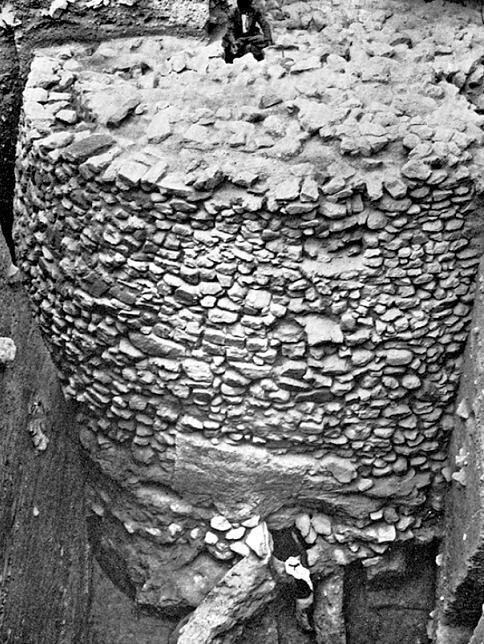
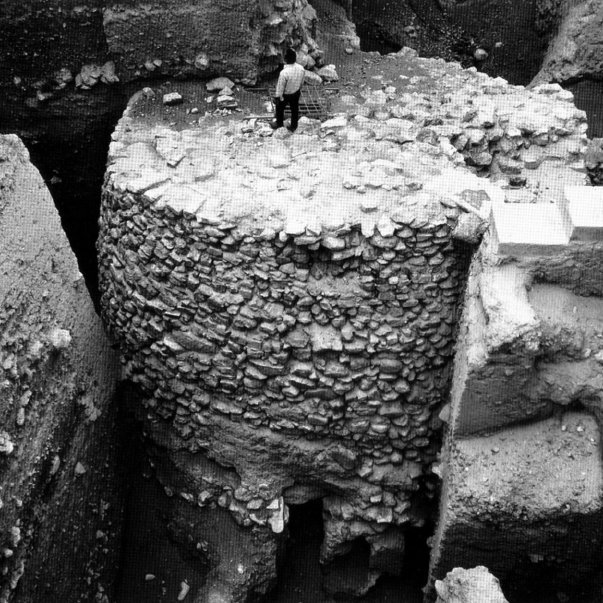
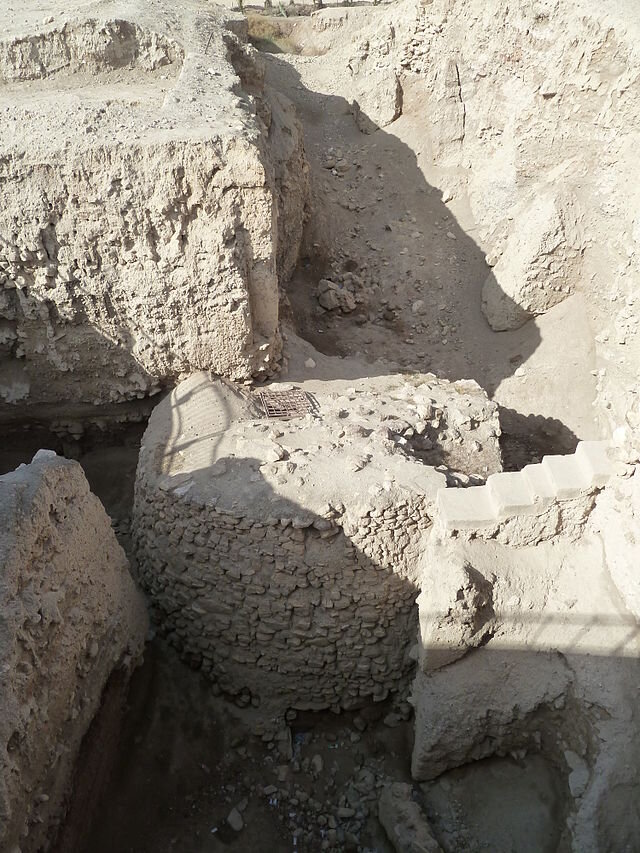
Story Source: Materials provided by American Friends of Tel Aviv University. Note: Content may be edited for style and length.
Journal Reference: Roy Liran and Ran Barkai. Casting a shadow on Neolithic Jericho. Antiquity, Volume 85, Issue 327, March 2011 [abstract]




